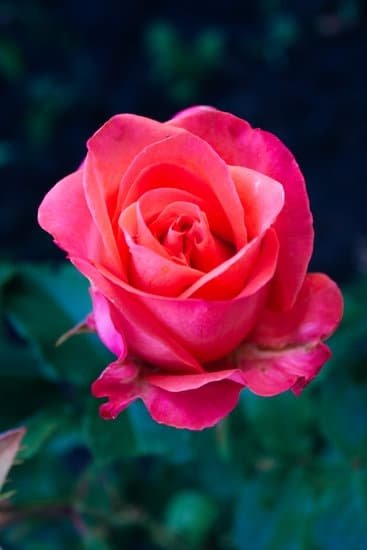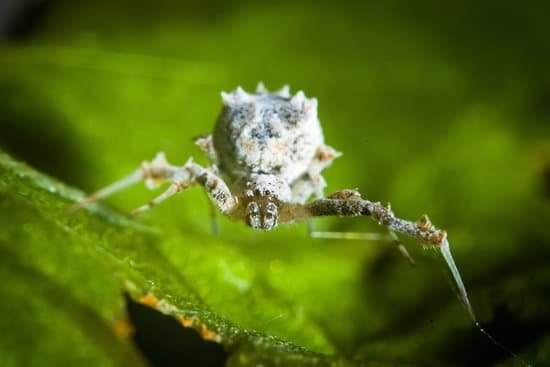Are you looking for creative and budget-friendly ways to bring some greenery into your home? Look no further than DIY ideas for home container gardening. Container gardening is the perfect solution for individuals with limited outdoor space or those wanting to add a touch of nature indoors. This article will guide you through the concept of home container gardening and its many benefits.
Home container gardening involves growing plants in containers such as pots, buckets, or even repurposed items like mason jars or wooden crates. It allows you to cultivate a variety of plants regardless of your living situation, making it an ideal option for urban dwellers or apartment renters. Not only does container gardening add visual appeal to your space, but it also provides opportunities to grow your own herbs, fruits, vegetables, and flowers right at home.
By choosing the right containers, selecting the perfect location with adequate sunlight and space, investing in essential tools and supplies, and selecting beginner-friendly plants, you can kickstart your container garden with ease. Additionally, this article will explore creative DIY ideas for upcycling containers to personalize your garden while providing tips on care and maintenance.
Whether you’re a seasoned gardener or just starting out on your green journey, home container gardening offers endless possibilities for creating a vibrant oasis in any space.
Choosing the Right Containers for Your Plants
When it comes to home container gardening, choosing the right containers for your plants is crucial for their growth and success. There are a variety of different types of containers available, each with its own set of benefits and considerations. From traditional terracotta pots to hanging baskets and even repurposed items, the options are endless.
Materials to Consider
When selecting containers for your home container garden, it’s important to consider the materials they are made from. Terracotta pots are a popular choice as they are durable and provide good insulation for plant roots. Plastic containers are lightweight and affordable, making them a practical option for beginners. For a more eco-friendly choice, consider upcycling old tin cans or wooden crates for a rustic look in your garden.
Types of Containers
The type of container you choose will also depend on the size and root structure of the plants you plan to grow. Larger plants like tomatoes or peppers may require deeper containers to accommodate their root systems, while smaller herbs can thrive in smaller pots or hanging baskets. Window boxes are perfect for growing flowers or herbs on balconies or windowsills where space is limited.
With so many options available, it’s easy to get creative with diy ideas for home container gardening by mixing and matching different types of containers to create a unique and visually appealing garden display that fits your personal style and space constraints. By considering both the materials and types of containers you use, you can ensure that your plants have the proper environment to thrive and flourish in your DIY container garden project.
Selecting the Perfect Location for Your Container Garden
Container gardening is a versatile and rewarding activity that allows individuals to cultivate plants in limited spaces, such as balconies, patios, or even windowsills. One of the key factors to consider when engaging in home container gardening is selecting the perfect location for your garden. Adequate sunlight, space, and accessibility are crucial elements to ensure the success of your plants.
When choosing the location for your container garden, it’s essential to assess the amount of sunlight that area receives throughout the day. Most plants require at least 6 hours of sunlight daily to thrive. South-facing locations typically receive the most sunlight, while north-facing areas tend to be shadier. Take note of any obstructions like buildings or trees that may cast shadows on your plants and adjust accordingly.
In addition to sunlight, consider the available space in your chosen location. Make sure there is enough room for your containers to allow proper air circulation between plants. Accessibility is also important for maintenance tasks such as watering, fertilizing, and pruning. Opt for locations that are easy to reach and convenient for regular care of your container garden.
| Aspect | Details |
|---|---|
| Sunlight | Plants need at least 6 hours of sunlight daily |
| Space | Ensure enough room for proper air circulation between plants |
| Accessibility | Choose locations that are easy to reach for maintenance tasks |
Essential Tools and Supplies Needed for Successful Container Gardening
Container gardening is a fantastic way to bring greenery and life into your home, even if you have limited space or access to outdoor areas. To ensure the success of your home container gardening venture, it is essential to have the right tools and supplies on hand. From soil mixtures to watering cans, being prepared with the necessary items will make your gardening experience smoother and more enjoyable.
Here are some essential tools and supplies you will need for successful container gardening:
- High-quality potting mix: Opt for a well-draining potting mix that is specifically formulated for container plants.
- Containers of different sizes: Choose containers that have drainage holes at the bottom to prevent overwatering.
- Gardening gloves: Protect your hands from dirt, moisture, and any sharp objects while tending to your plants.
- Watering can or hose: Ensure that you can easily water your plants without causing damage or excessive moisture.
- Fertilizer: Select a balanced fertilizer that provides essential nutrients for healthy plant growth.
In addition to these basic tools and supplies, consider investing in a trowel, pruners, and plant markers to aid in planting and maintenance tasks. By having these items ready before you start your container garden, you’ll be better equipped to care for your plants effectively and watch them thrive.
Once you have gathered all the necessary tools and supplies, it’s time to roll up your sleeves and get started on creating your own DIY ideas for home container gardening. Whether you’re repurposing old buckets or transforming wooden crates into planters, the possibilities are endless when it comes to adding a touch of creativity to your garden space.
With the right tools in hand, you’ll be well on your way to enjoying a lush and vibrant container garden in no time.
Best Plants for Container Gardening
Container gardening is a great way to bring greenery and life into any space, no matter how small. For beginners looking to try their hand at container gardening, it’s essential to start with plants that are easy to care for and adapt well to growing in pots.
Some recommendations for beginner-friendly plants include herbs like basil, parsley, and mint. These culinary herbs not only add flavor to your dishes but also thrive in containers with proper sunlight and watering.
Another great option for novice container gardeners is succulents. These hardy plants come in a variety of shapes and sizes, making them perfect for adding visual interest to your indoor or outdoor space. Succulents are also low-maintenance plants that require minimal watering and can tolerate different light conditions, making them ideal for those who may not have a green thumb.
Additionally, flowering annuals like petunias, marigolds, and geraniums are excellent choices for container gardening beginners. These colorful blooms can brighten up any space and are relatively easy to grow with the right care. With regular deadheading and proper watering, these flowers will continue to bloom throughout the growing season, providing endless beauty to your container garden.
When selecting plants for your container garden, consider the amount of sunlight your space receives and choose plants that are suitable for those conditions. It’s also essential to ensure that your containers have proper drainage to prevent waterlogging, which can lead to root rot. By starting with these beginner-friendly plant options, you’ll be on your way to creating a thriving DIY container garden in no time.
| Plants | Level of Care |
|---|---|
| Herbs (Basil, Parsley, Mint) | Low maintenance; requires proper sunlight and watering |
| Succulents | Very low maintenance; tolerates different light conditions |
| Flowering Annuals (Petunias, Marigolds, Geraniums) | Moderate maintenance; require regular deadheading and watering |
Creative DIY Ideas for Upcycling Containers for Your Garden
Container gardening is a fantastic way to bring nature into smaller living spaces and add a touch of greenery to your home. When it comes to choosing containers for your plants, the possibilities are endless. From traditional terracotta pots to repurposed household items, there are plenty of creative DIY ideas for home container gardening.
Here are some innovative ways to upcycle containers for your garden:
- Use old tin cans: Clean and paint old tin cans to create unique planters for herbs or small flowers.
- Repurpose wooden crates: Turn old wooden crates into rustic planters for a charming and vintage look in your garden.
- Get creative with mason jars: Hang mason jars with twine or wire to create stylish hanging planters for your indoor herbs.
Incorporating DIY ideas for upcycling containers not only adds a personal touch to your garden but also helps reduce waste by giving new life to old items. Plus, repurposing containers can be a budget-friendly way to start your container gardening journey.
Consider exploring flea markets, thrift stores, or even your own garage for potential containers that can be transformed into unique planters. Whether you have a small balcony, kitchen windowsill, or backyard patio, there is no limit to the creativity and sustainability you can achieve with DIY container gardening projects.
Tips for Proper Care and Maintenance of Your Container Garden
Container gardening is a fantastic way to bring greenery into your home, even if you have limited outdoor space. Taking care of your plants in containers requires some specific attention and care to ensure they thrive. To keep your container garden healthy and flourishing, here are some essential tips for proper care and maintenance.
First, it’s crucial to water your container plants regularly. The soil in containers tends to dry out faster than traditional garden beds, so paying close attention to your plants’ watering needs is essential. Make sure the soil is moist but not waterlogged, as overwatering can lead to root rot. Consider investing in a watering schedule or using self-watering containers to help maintain consistent moisture levels.
In addition to watering, it’s important to fertilize your container plants regularly. Since nutrients can get depleted more quickly in containers, using a slow-release fertilizer or liquid fertilizer every few weeks can help keep your plants healthy and thriving. Be sure to follow the instructions on the fertilizer packaging and avoid over-fertilizing, which can harm your plants.
Finally, don’t forget about regular maintenance tasks such as pruning, deadheading flowers, and checking for pests and diseases. Keeping an eye on your container garden regularly allows you to catch any issues early on before they become major problems. By staying proactive with care and maintenance, you’ll ensure that your DIY ideas for home container gardening are successful and enjoyable for years to come.
Troubleshooting Common Issues in Home Container Gardening
Home container gardening can be a rewarding and fulfilling hobby, but it does come with its own set of challenges. One common issue that gardeners may face is dealing with pests that can damage their plants. To address this problem, it is essential to regularly inspect your plants for any signs of pest infestation.
Common pests that may affect container gardens include aphids, spider mites, and whiteflies. One effective way to control these pests is by using natural remedies such as neem oil or insecticidal soap.
Another challenge that home container gardeners often encounter is the occurrence of plant diseases. Diseases like powdery mildew, fungal infections, and root rot can plague your plants if not properly managed. To prevent the spread of diseases in your container garden, make sure to provide adequate air circulation around your plants and avoid overwatering. If you notice any symptoms of disease on your plants, promptly remove and dispose of the affected parts to prevent further spread.
Aside from pests and diseases, other common challenges in home container gardening include issues like nutrient deficiencies, poor soil drainage, and environmental stressors. It is crucial to address these problems promptly to ensure the health and vitality of your container garden. Regularly monitoring the condition of your plants, providing proper nutrition through fertilization, and making adjustments based on seasonal changes can help mitigate these challenges effectively.
By staying informed about potential issues in home container gardening and implementing proactive measures to address them, you can enjoy a thriving and beautiful garden right at your doorstep. With a bit of patience, determination, and creativity in problem-solving, you can overcome any obstacles that come your way in maintaining a successful container garden filled with lush greenery and vibrant blooms for years to come.
Conclusion
In conclusion, home container gardening presents a wonderful opportunity to cultivate your own green oasis despite space constraints. The benefits are numerous, ranging from the joy of nurturing plants to reaping the rewards of fresh produce right at your doorstep. By following the tips and suggestions provided in this article, you can embark on your own gardening journey with confidence and creativity.
For those looking to delve into DIY ideas for home container gardening, there are endless possibilities to explore. From repurposing everyday items as planters to designing vertical gardens for limited spaces, the only limit is your imagination. By incorporating innovative and sustainable practices into your gardening endeavors, not only will you be adding beauty to your surroundings but also contributing positively to the environment.
So, whether you are a novice gardener or have some experience under your belt, consider taking the plunge into home container gardening. With proper care, patience, and a touch of creativity, you can transform any corner of your home into a vibrant and flourishing garden oasis. Start small with a few beginner-friendly plants, experiment with different containers and designs, and watch as your DIY project blossoms into a rewarding and fulfilling hobby. Happy gardening.
Frequently Asked Questions
What Is the Cheapest Way to Make a Container Garden?
The cheapest way to make a container garden is by reusing items you already have at home, such as old buckets, tin cans, or plastic containers. You can also look for sales on pots at gardening stores or repurpose items like wooden boxes or crates.
How Can I Make My Container Garden Look Good?
To make your container garden look good, consider using a variety of plants with different heights, colors, and textures to create visual interest. Make sure to choose plants that thrive in similar conditions and group them together accordingly. Don’t forget to regularly water and fertilize your plants to keep them healthy and vibrant.
What Is a Disadvantage to Container Gardening?
One disadvantage of container gardening is the limited space for plant roots to grow compared to traditional in-ground gardens. This can lead to more frequent watering and fertilizing requirements since the soil in containers tends to dry out faster than garden beds. Additionally, some plants may not thrive as well when grown in containers due to restricted root growth.

Welcome to my gardening blog! I am passionate about plants and enjoy sharing my knowledge and experiences with others. In this blog, I will write about everything related to gardening, from tips on how to get started to updates on my own garden projects.





